Extraction from the book: Weird Scenes: Inside The Canyon by author David McGowan
“For whatever reason—it’s still not understood by criminologists—
California in the 1970s was ground zero for serial killers.” Stella Sands, writing in The Dating Game Killer
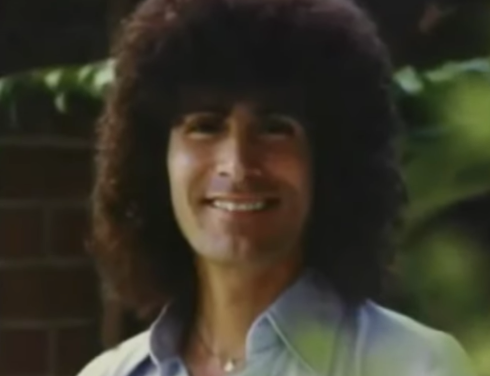
One thing that has become very clear while researching this book is that there are disturbing parallels between the Laurel Canyon saga and my previous research on the phenomenon of serial killers— research that led to my earlier book, Programmed to Kill. Nowhere is that more true than in the details of the curious case of Rodney Alcala, otherwise known as the Dating Game Killer, who is said to be one of the country’s most prolific serial killers. He has been convicted of seven murders, accused of several more, and some law enforcement officials have claimed, rather ludicrously, that he could be responsible for as many as 130 murders. It is only in recent years though that he has been identified as a serial killer, despite the fact that all the crimes he is accused of were committed in the 1970s.
In addition to being an alleged serial killer himself, Alcala allegedly operated on the same turf as a few other, more high-profile serial killers. And as fate would have it, he also had a number of connections to the Laurel Canyon scene and some of the key people and places that made up that scene. In other words, Alcala’s story seems to provide a bridge between the seemingly idyllic Laurel Canyon scene and the brutal world of serial murder.
In the opening chapter of Stella Sands’ The Dating Game Killer, that connection is hinted at:
“As cars cruised up and down Hollywood Boulevard and the Sunset Strip, radios blared edgier, angrier rock and roll: Masters Of War by Bob Dylan, What’s Going On? by Marvin Gaye, Eve Of Destruction by Barry McGuire. Musicians from bands like the Doors, the Byrds, Cream, and the Animals played the Whiskey-a-Go-Go [sic] on the Sunset Strip— and partied with wild abandon at the Chateau Marmont Hotel up the street... Amidst all this turmoil and social upheaval in 1968, an event occurred that is not well documented by the era’s historians: ‘Tali S.,’ age eight, was abducted on her way to school.”
This story begins though in 1943, in San Antonio, Texas, with the birth on August 23 of one Rodrigo Jacques Alcala-Buquor. Growing up, young Rodrigo (known as Rodney) attended mostly private Catholic schools where he got excellent grades and never showed any signs of being a problem child. In 1951, when he was about eight, he and his family moved to Mexico where he attended the American School. Not long after relocating, Rodney’s father left the family and returned to the States alone.
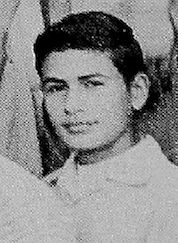
In 1954, after a few years in Mexico, Rodney and his mom and siblings relocated once again, this time to Los Angeles, California. By 1956, he was enrolled at the private Cantwell High School for boys, which later merged with Sacred Heart of Mary High School for girls to become the Cantwell-Sacred Heart of Mary High School, owned and operated by the LA Archdiocese.
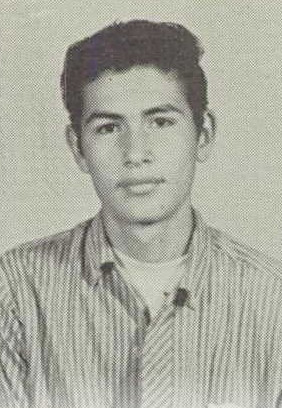
Alcala finished out his senior year at Montebello High School, graduating in 1960. According to various reports, he had a wide circle of friends and never had any trouble lining up dates during his high school years. In addition to being an excellent student and talented athlete, he was on the yearbook planning committee and he took piano lessons. He was, in other words, a well-rounded and popular kid—the kind of young man you would expect to see voted “most likely to succeed” by his high school classmates.

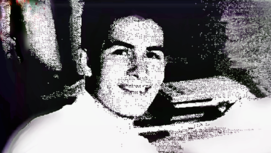
On June 19, 1961, Rodney Alcala enlisted in the US Army. His older brother was at the time attending prestigious West Point Military Academy, which generally requires a nomination from a US Senator or a member of the House of Representatives. There is no explanation in the available literature as to how the Alcala family had either the financial means or the political connections to secure such an appointment.
Rodney meanwhile entered a program in North Carolina to become a paratrooper but instead served as a clerk, if his service records are to be believed. He was stationed, interestingly enough, at Fort Bragg, which had become, with the creation of the Psychological Warfare Center in 1952, a hotbed of research on ‘unconventional warfare.’ Fort Bragg is also the long me home of US Special Forces.
After two years of military service, Alcala unexpectedly showed up at his mother’s Montebello home after having gone AWOL. He was quickly hospitalized and informed that he was in immediate need of psychiatric treatment. Taken first to San Francisco, he soon found himself at a military hospital at the Marine Corps Air Station at El Toro, near Irvine, California. He remained there for an unspecified length of time.
Following his release, he returned to his mother’s home in Montebello and shortly thereafter enrolled in UCLA’s College of Fine Arts, from where he earned a degree in 1968. During his first year there, another young student who had just moved out from Florida—a guy by the name of Jim Morrison—likewise enrolled in UCLA’s College of Fine Arts. Both young men displayed a passion for making student films. According to Morrison biographers Jerry Hopkins and Danny Sugerman, during Jim and Rodney’s time at the College of Fine Arts, a fellow student cut his girlfriend’s heart out.

On September 25, 1968, an eight-year-old girl later identified as Tali Shapiro was abducted while on her way to the Gardner Street Elementary School in Hollywood. At the time, according to Sands, Shapiro was “living temporarily at the Chateau Marmont Hotel in West Hollywood with her brother, sister, mother, and music-industry father.” The family was temporarily rubbing elbows with the likes of Jim Morrison and Janis Joplin because, as it turns out, “their home had recently burned down in a fire.”


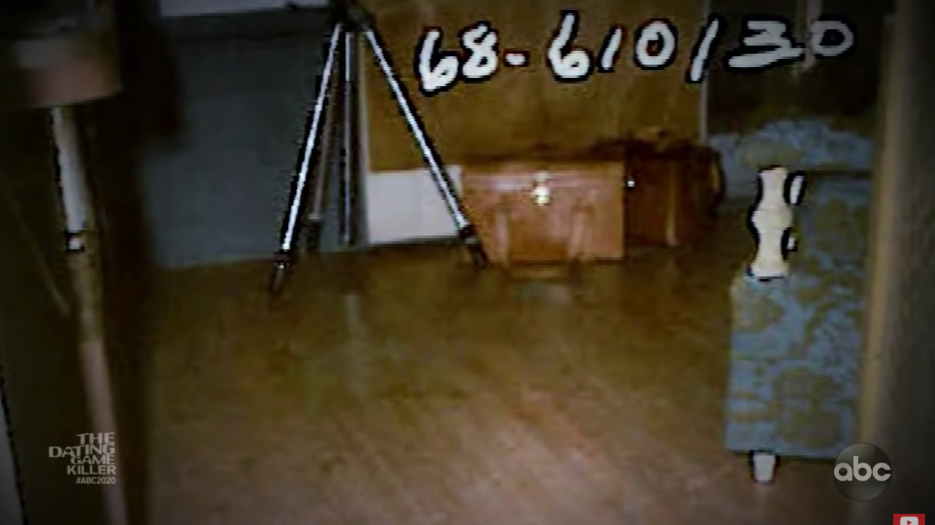
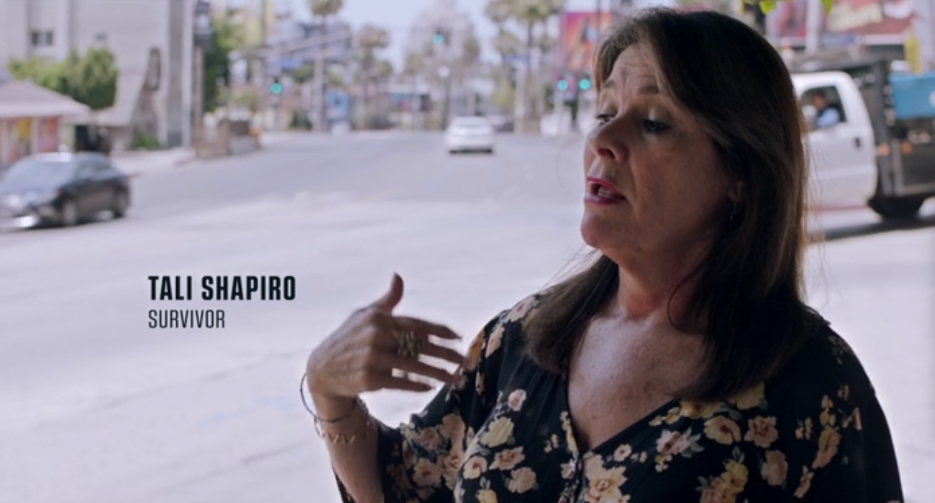
As Gary Valentine Lachman has written, the hotel during that era was widely rumored to offer a decidedly unhealthy environment in which to raise a young girl: “Tales of pacts with the Devil followed [Led] Zeppelin throughout their career, and stories of orgies, black masses and satanic rites were commonplace, mostly centered around the infamous Chateau Marmont off the Sunset Strip.”
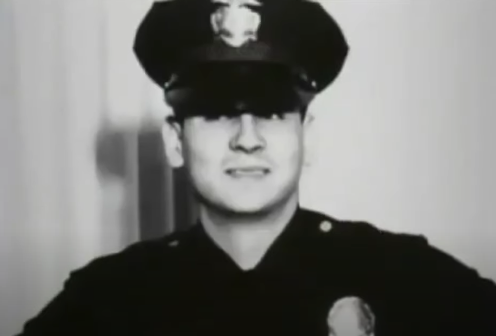
On the morning of her abduction, Shapiro is said to have woken early and, without informing her parents, decided on her own to walk to school rather than taking the bus—which seems difficult to believe given her young age and the fact that the school was a little over a mile away down seedy Sunset Boulevard. As the story goes, Alcala was spotted luring Shapiro into his vehicle by a good samaritan, who then followed Alcala back to his apartment where he called police from a nearby phone. The police though apparently didn’t rush over, giving Alcala to strip, viciously rape and then bludgeon the young girl nearly to death. She was so thoroughly battered, with her head bashed open and a heavy bar placed across her throat, that the responding officer initially thought she was dead.
(Alcala abducted Shapiro with a car without license plates on it)




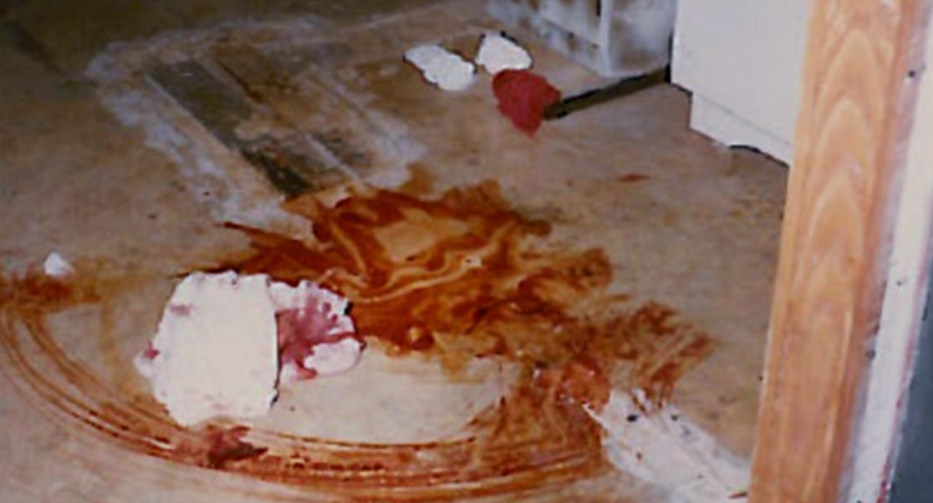
Upon arrival, the officer knocked on the suspect’s front door and was greeted through the window by a partially naked man who claimed he had just gotten out of the shower and would need a minute to get dressed. Despite the fact that the officer was responding to a report of an abducted child (with the witness on the scene) and had just encountered the presumed suspect, he nevertheless allowed that suspect me to get dressed and escape. According to Sands, “In the short me it had taken to kick in the door, the perpetrator—the monster—had slipped out the back.” The LA Weekly concurred, claiming that Alcala “escaped through a backdoor.” Not many apartment units, it should probably be noted, come equipped with a back door.

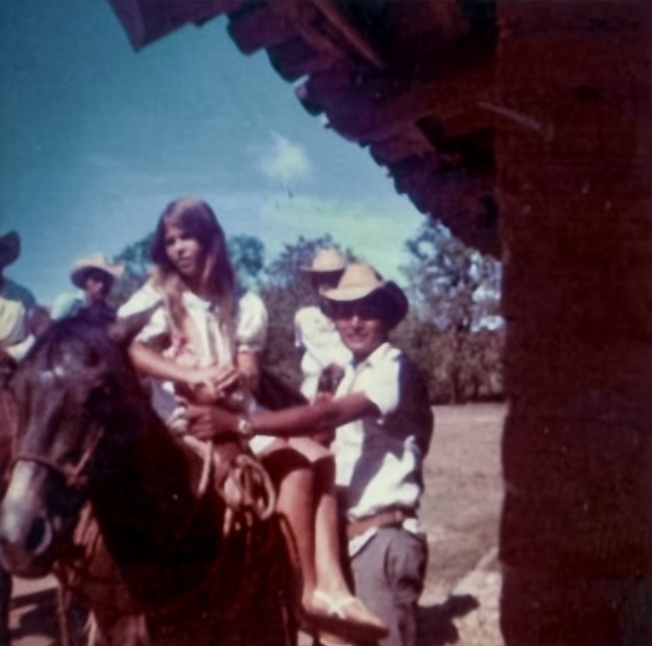

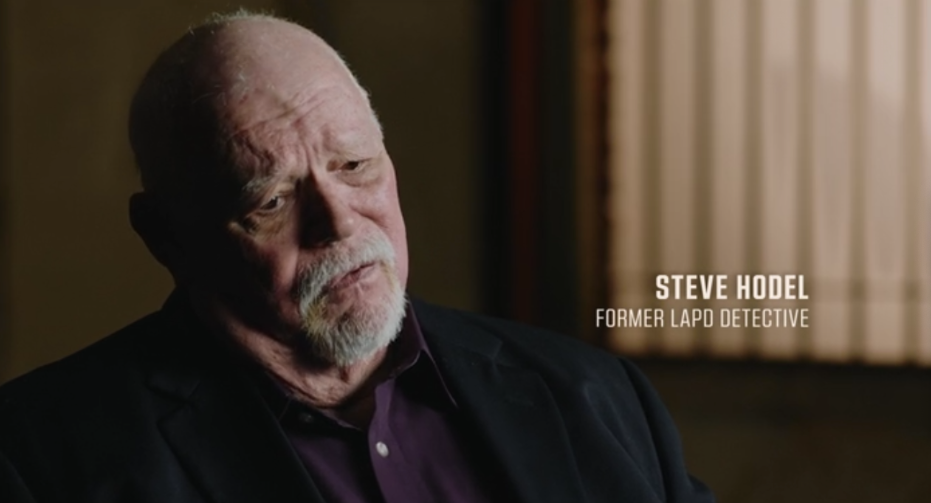
In any event, the apartment was found to be full of photographic equipment and stacks of photographs of young girls. The suspect, however, was nowhere to be found. The case was assigned to, of all people, LAPD detective Steve Hodel, brother of Michelle Phillips’ surrogate mom, Tamar Hodel, and son of accused Black Dahlia killer George Hodel. According to a January 21, 2010, article in the LA Weekly, Hodel was at the time a “newbie detective working juvenile crimes.” The Shapiro family, meanwhile, abruptly decided to relocate to Mexico, a move that is routinely cited as the reason the crime was never prosecuted.
Following his unlikely escape, Alcala immediately relocated to New York and, using the name John Berger, applied for admission to the prestigious New York University School of the Arts. Although the semester had already begun at the notoriously selective school, Berger/ Alcala was nevertheless admitted. He ended for three years, working at times as a security guard and, during the summers of 1969, 1970 and 1971, as an arts counselor.
One of Alcala’s instructors at the school was a guy who during those same years had a slaughter perpetrated at his home, and who Pamela Des Barres once described as being “definitely not normal,” Mr. Roman Polanski.

In June of 1971, Cornelia Crilley, a TWA stewardess who lived with her family across from the sprawling Cavalry Cemetary, was found dead. She had been in a two-year relationship with a Leon Borstein, then an assistant district attorney for Brooklyn who later became the chief special prosecutor for New York City. Borstein, who claimed that Crilley was the love of his life but who nevertheless married just a year after her murder, was initially the prime suspect. The crime appeared to have nothing whatsoever to do with Rodney Alcala—but a full four decades later, in 2011, he would be indicted for her murder.

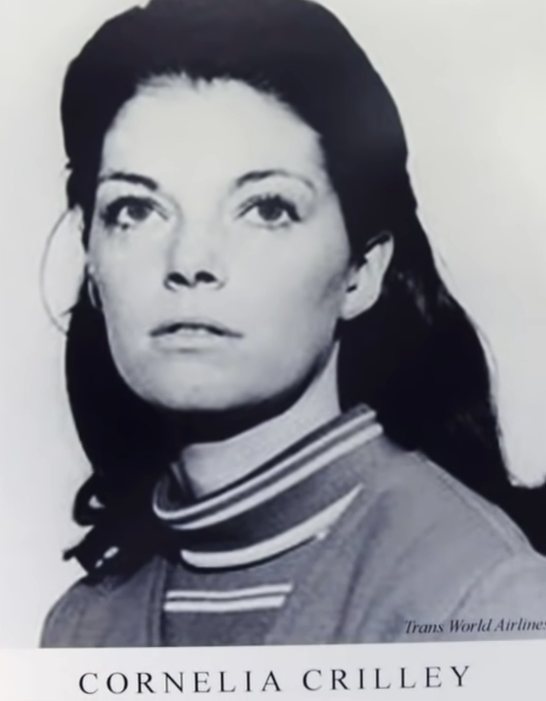
By the time of Crilley’s murder, Sands notes, “detective Steve Hodel and his LAPD team had been trying to locate Alcala for nearly three years.” They finally got a break when Alcala was added to the FBI’s Ten Most Wanted list and was subsequently recognized by a couple of the teens at the camp where he served as a counselor.
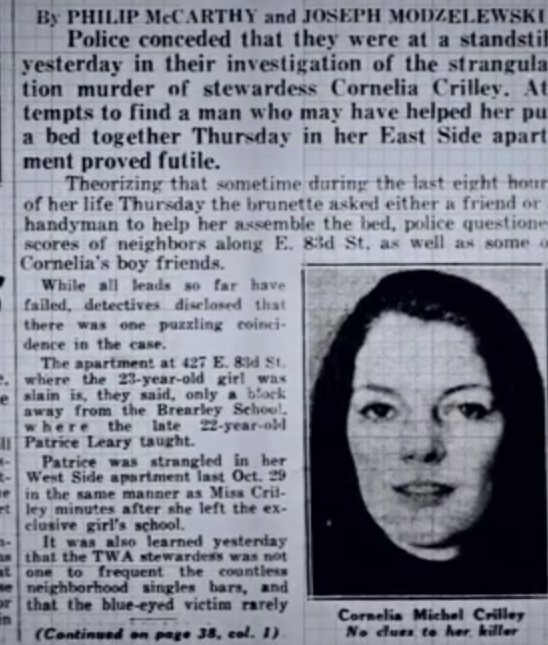
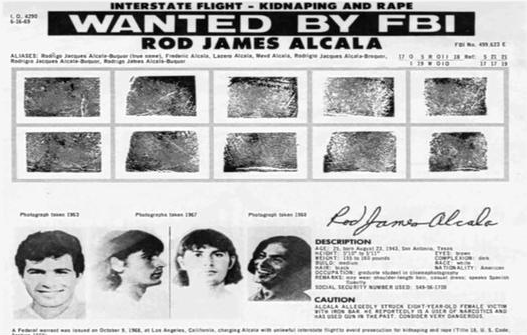
Upon his arrest and return to Los Angeles, Alcala was facing very serious charges of kidnapping, rape and attempted murder, yet he was allowed to cop a guilty plea to a single count of child molestation, for which he received a sentence of one to ten years. He ultimately served less than three years, with much of that time spent at the notorious California Medical Facility at Vacaville.
Also housed at Vacaville during that time was Donald DeFreeze, who would soon emerge as Cinque, leader of the so-called Symbionese Libera on Army. According to Dr. Colin Ross, during that same time period, “the CIA was conducting mind control experiments [at Vacaville] under MKSEARCH Subproject 3.”
In August 1974, a prison psychiatrist recommended that Alcala be released and he was paroled to LA County and required to register with the local police as a sex offender. Within just weeks of gaining his freedom though, Alcala kidnapped a thirteen-year-old girl and was promptly arrested once again. He again caught a lucky break and was found guilty only of violating his parole and of furnishing drugs to a minor, escaping far more serious charges. He served about two-and-a-half years and was paroled on June 16, 1977.
Just days after being released, he asked his parole officer for permission to take a trip to New York City, and, since he had behaved himself so well the last time he was on parole, his request was granted.
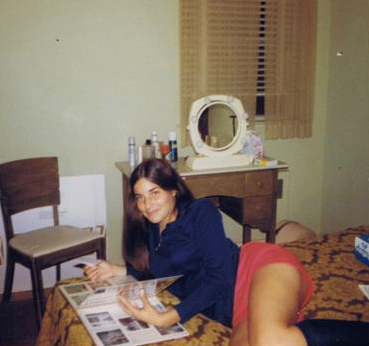
Alcala remained in New York for a little over a month, ostensibly to visit relatives. During his time there, a woman by the name of Ellen Jane Hover went missing. Being the small world that it is, Ellen just happened to be the daughter of Herman Hover, who had been the long time owner of Ciro’s on the Sunset Strip, the club that famously launched the career of the Byrds. She was also the goddaughter of Sammy Davis, Jr. For reasons that were never explained, the FBI took a keen interest in Hover’s disappearance, which happened to come at a time when New York City was gripped by intense fear. It was, after all, the infamous ‘Summer of Sam’ and Hover’s disappearance on July 15, 1977, was sandwiched between two Son of Sam attacks, one on June 26 and another on July 31.







Hover remained missing for almost a full year, until her skeletal remains were discovered in June of 1978, in a shallow grave on, of all places, the Rockefeller estate in Westchester County. It would be over three decades later that Rodney Alcala would be charged with her murder.
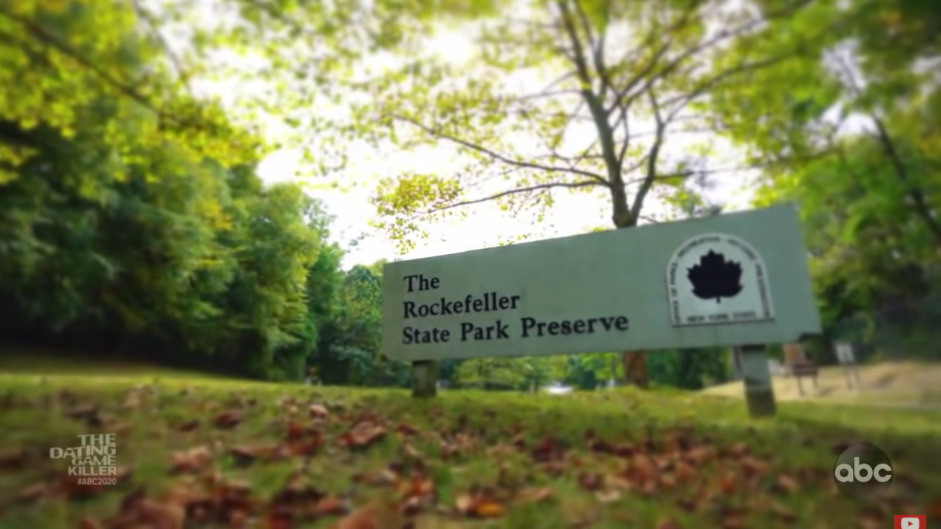

Upon his return from New York, Alcala applied for a job as a typesetter at the Los Angeles Times. He applied using his real name and was promptly hired, despite having been twice convicted for felony offenses, having served time for crimes committed against children, being a registered sex offender, being on parole, and holding the distinction of once numbering among the FBI’s Ten Most Wanted. A coworker would later say, perhaps tellingly, that Alcala seemed like he knew a lot of famous people.
On November 10, 1977, the nude, brutalized body of eighteen-year- old Jill Barcomb was found posed on a side road adjacent to, and in full view of, the Marlon Brando estate overlooking Laurel Canyon. The murder was investigated by LAPD detective Phillip Vannatter, who would later famously tote a vial of blood around with him while investigating the murders of Nicole Brown Simpson and Ron Goldman.
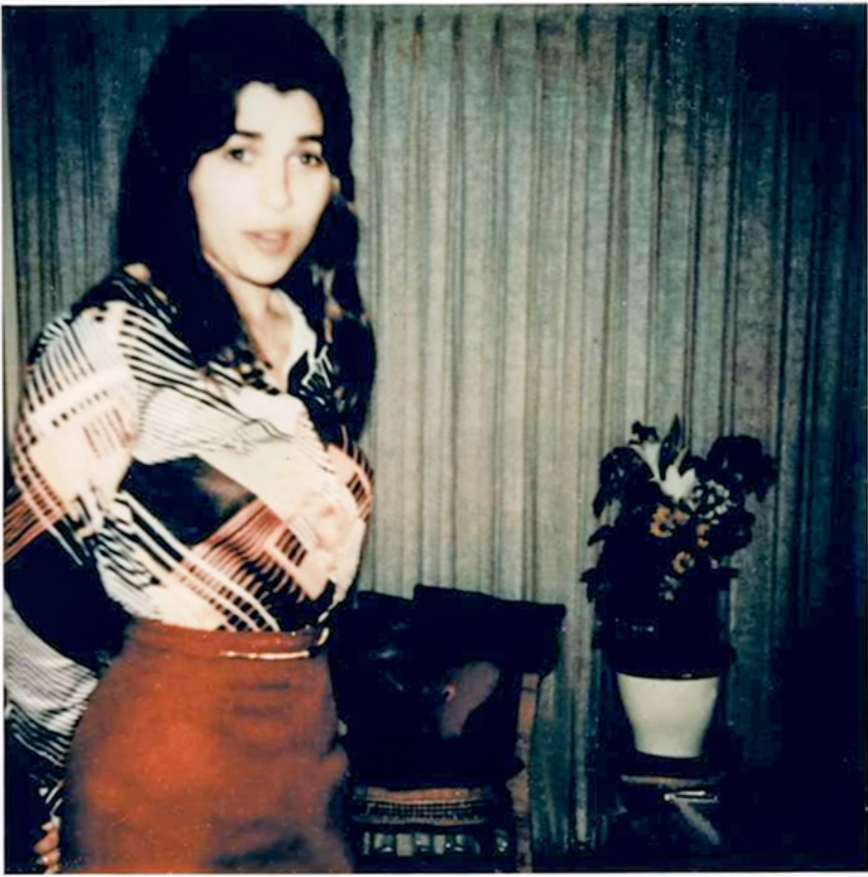
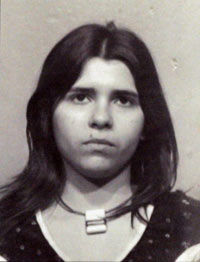
For many, many years, Barcomb’s death was credited to the Hillside Strangler team of Angelo Buono and Kenneth Bianchi. Like the Strangler victims, Jill was found nude, strangled, tortured, sexually assaulted, bound and posed on a hillside. And her death occurred amidst a string of Strangler killings—Judith Miller on October 31, Lissa Kastin on November 6, Barcomb on November 10, Kathleen Robinson on November 18, and Kristina Weckler, Delores Cepeda, and Sonja Johnson all found dead on November 20. In addition, Barcomb knew Strangler victim Miller. Nevertheless, the murder would eventually be credited to Alcala, but not for nearly forty years.

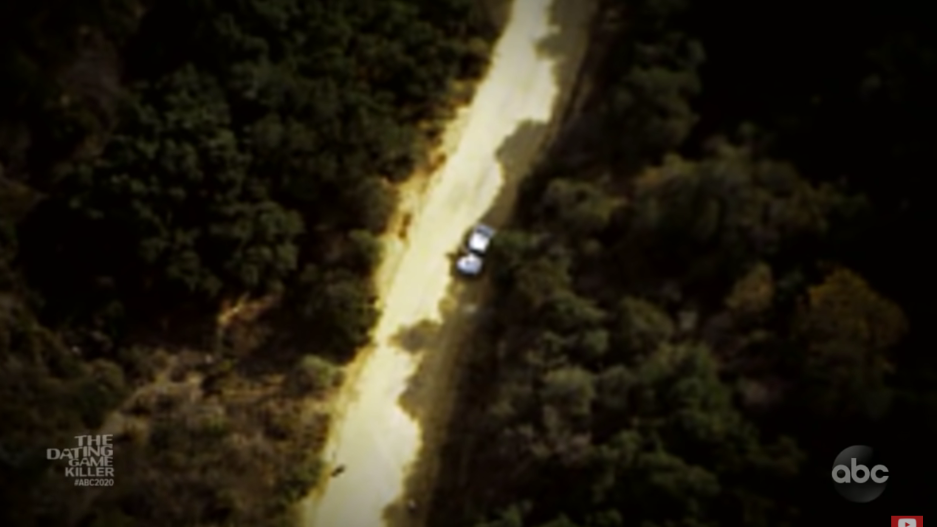
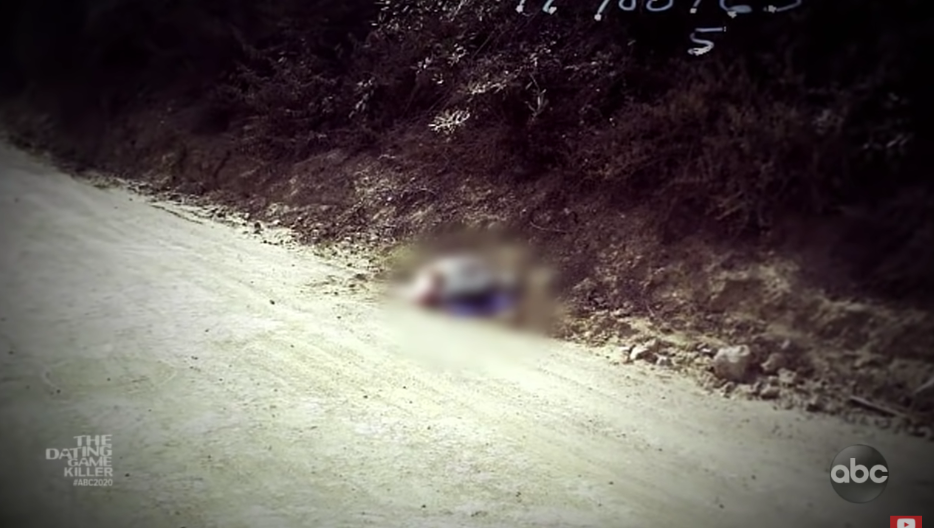
According to the official version of events then, Judith Miller, chosen at random, was killed on Halloween by a pair of serial killers. And then a mere ten days later, in an officially unrelated event, her friend Jill Barcomb, also chosen at random, was killed by a different serial killer who, despite being unconnected to the other two serial killers, nevertheless killed and posed Barcomb in a manner remarkably similar to the way Miller was killed and posed. One has to wonder what the odds of that actually happening would be.
In any event, Jill Barcomb, found not far from where Marina Habe had been found nearly a decade earlier, is yet another tragic addition to the Laurel Canyon Death List. As is, I suppose, Ellen Jane Hover. Tali Shapiro narrowly avoided making the list.
At the request of the FBI, Alcala was brought down to the LAPD’s Parker Center in December 1977 for questioning concerning the still-missing Ellen Hover. He admitted knowing Hover and even acknowledged being with her on the day she vanished, but he claimed to know nothing about her disappearance. That same month, twenty-eight-year- old nurse Georgia Wixted was found brutally murdered in her Malibu, California, bedroom. For nearly thirty years, there would be absolutely nothing linking Rodney Alcala to the crime or the crime scene.
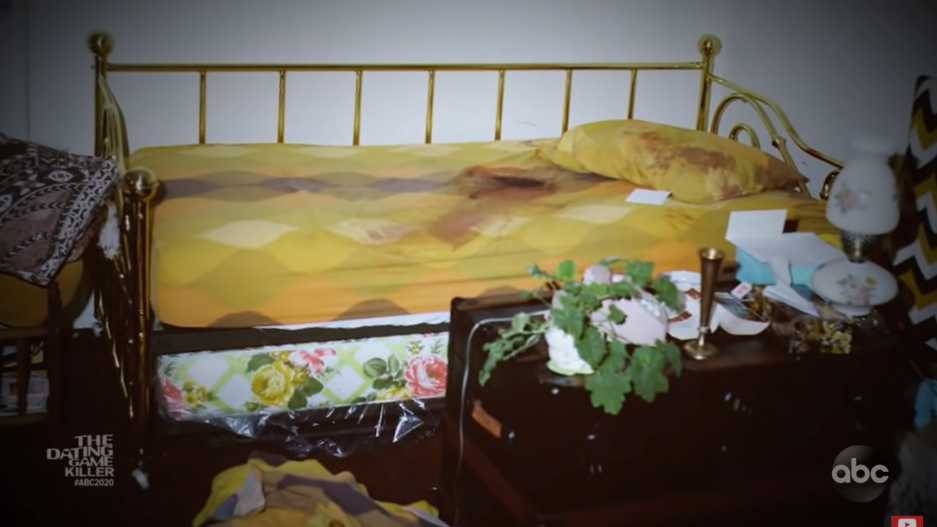
In early 1978, Alcala was questioned by the Hillside Strangler Task Force, which was composed of members of the LAPD, the LA Sheriff’s Department and the Glendale Police Department. He was arrested at that time, though only for the benign offense of being in the possession of marijuana, for which he served a brief jail sentence. For a time though, he was considered a “person of interest” to the task force. On June 23, 1978, just after Alcala’s release from that brief jail stint, the savaged body of thirty-two-year-old legal secretary Charlotte Lamb was discovered on the floor of an apartment laundry room in El Segundo, California. Once again, there was no evidence linking Alcala to either the crime, the victim, or the crime scene, and he would not be named as a suspect for some twenty-five years.
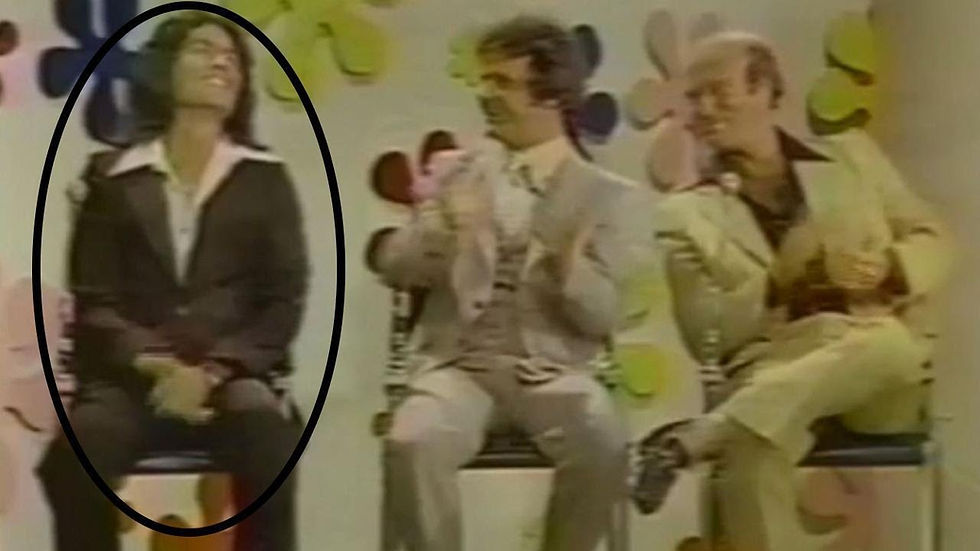
On September 13 of that same year, Alcala infamously appeared as Bachelor #1 on television’s The Dating Game. Despite his criminal history and sex offender status, which surely would have been discovered during the show’s screening process, he was presented to women across the country as one of the nation’s most eligible and desirable bachelors. The guy doing that presenting was Dating Game producer Chuck Barris, who has stated publicly that he was a CIA asset at the time the show was in production and that the show itself was essentially an elaborate CIA front designed to provide cover for Barris’ own travels and activities. Mr. Barris was also, according to some reports, a onetime resident of everyone’s favorite canyon.


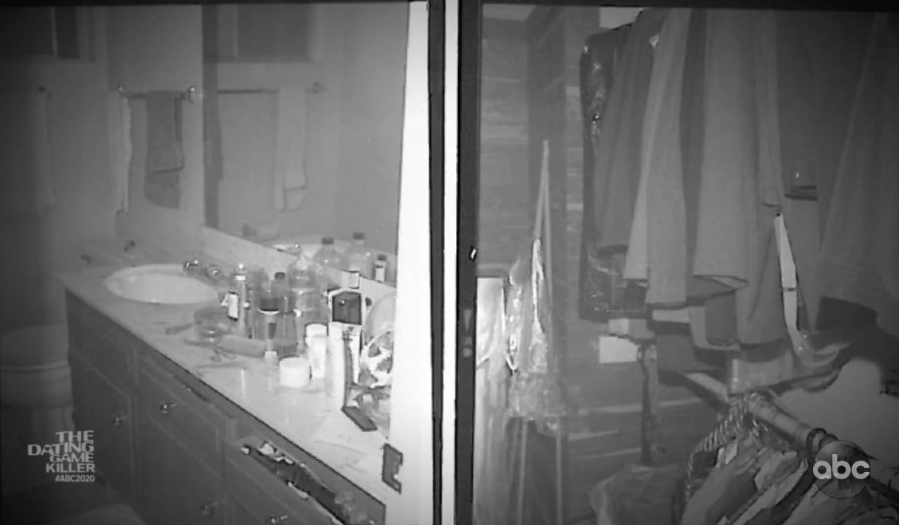


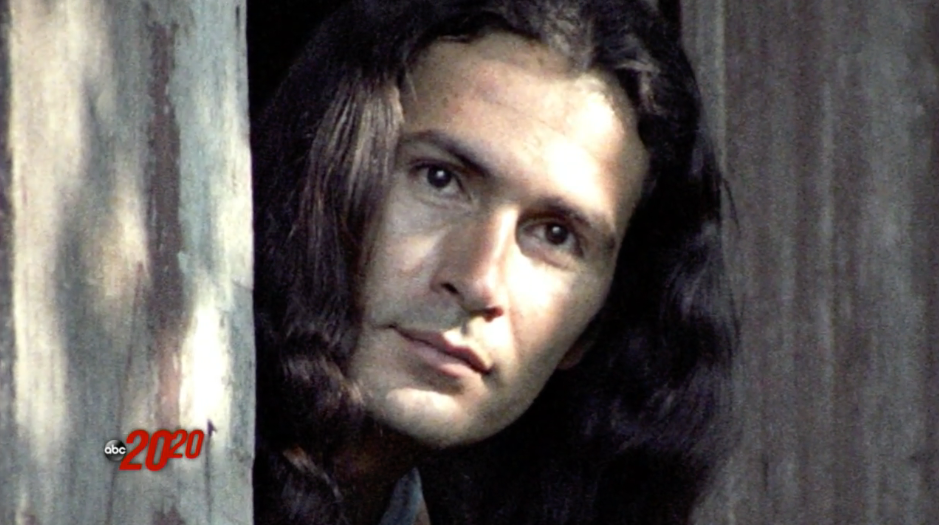
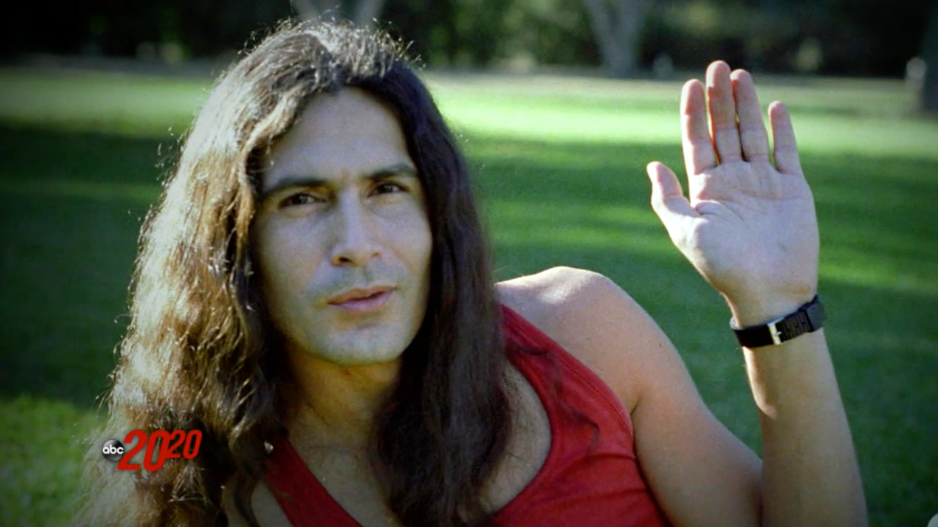
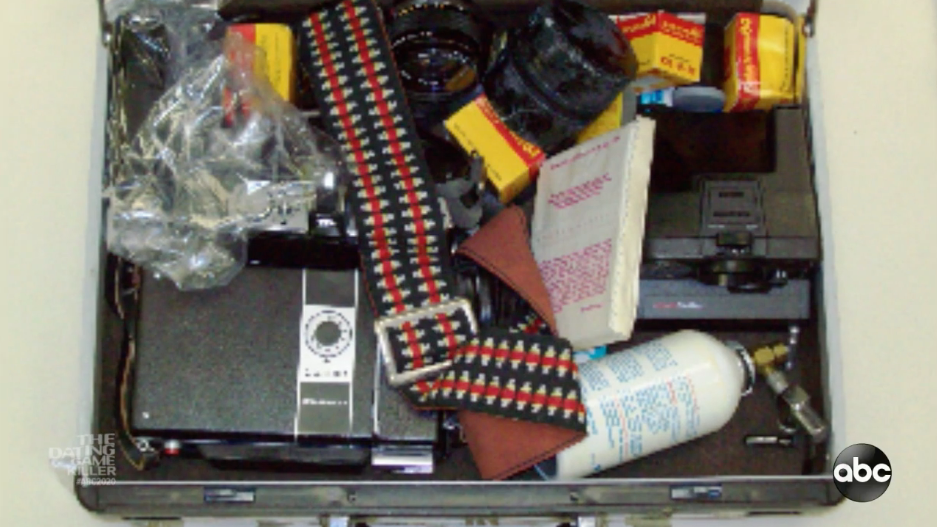
On February 13 of the following year, Alcala picked up a fifteen-year- old hitchhiker by the name of Monique Hoyt, who voluntarily spent that night at Alcala’s home. The next day, Valentine’s Day, thirty-four-year- old Rodney Alcala took fifteen-year-old Monique Hoyt into the woods to shoot nude photos. At some point the situation turned violent and nonconsensual, resulting in yet another arrest for Alcala. Though facing very serious felony charges, including kidnapping, rape, and the production of child pornography, his bail was set at a paltry $10,000. At the end of April, Alcala gave his two-week notice to his superiors at the LA Times. How he had managed to keep his job through his jail sentence for marijuana possession and his arrest for kidnapping a young girl is anyone’s guess. The Times apparently used the same screening service as The Dating Game.

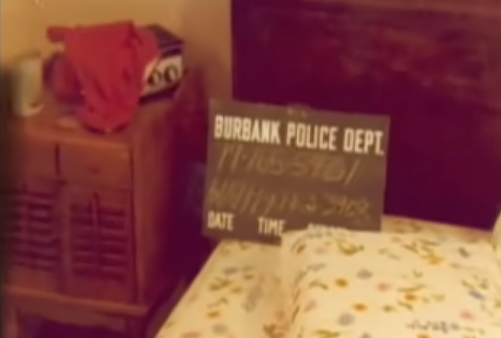
On June 14, another young woman, twenty-one-year-old Jill Parentau, turned up dead in her Burbank, California, apartment. Once again, there was no evidence linking Rodney Alcala to the crime and Parentau’s murder would remain unsolved for two-and-a-half decades. Six days after her murder, on the eve of the summer solstice, twelve-year- old Robin Samsoe of Huntington Beach, California, went missing after spending time at the beach with her best friend.

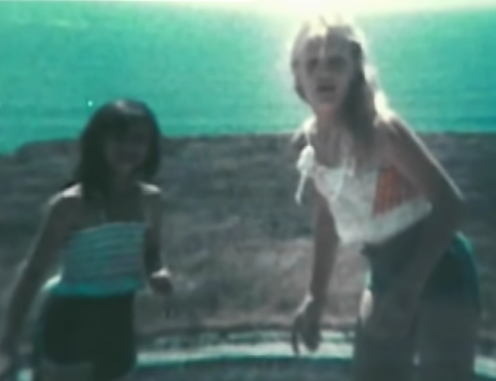

Offcially, her remains were discovered twelve days later in a heavily wooded area allegedly chosen by Rodney Alcala. But the reality appears to be that it is unknown what became of Samsoe. What is known is that from the time of her disappearance, authorities took a much different approach to dealing with Alcala than they had in the past. Before a month had passed, he was back in prison and would never walk free again.
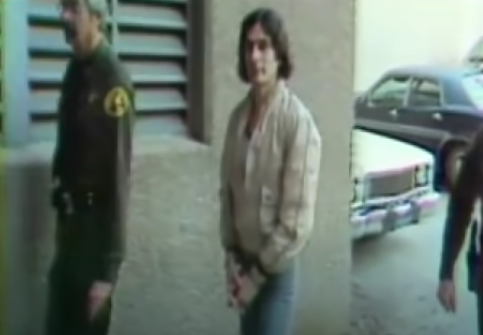
As the story is generally told, Samsoe was strolling the beach with her friend when they were approached by Alcala with a request to take their photos, ostensibly for a student photo contest. A neighbor who happened to be passing by approached the trio, at which time Alcala lowered his head and quickly shuffled off. The girls went about their business without giving the incident much thought and Samsoe soon said goodbye to her friend. Borrowing the friend’s bike, she headed off to a ballet class that she never made it to.
On the afternoon of July 2, a worker with the US Forestry Service discovered human skeletal remains in a heavily wooded section of the Angeles National Forest. The area was littered with discarded beer bottles and cigarette butts. The remains appeared to be those of an adult, and investigators, according to a June 1989 article in Orange Coast Magazine, believed the death to be “drug-related.” The crime scene, according to the same report, “was given only a cursory examination by the Los Angeles Sheri ’s Department.” Five days later an LA County coroner decided that the remains were actually those of a child. And not just any child, but the missing Robin Samsoe.
Unexplained was how the remains of a child could have been mistaken for those of an adult. Also unexplained was how the child could have been reduced to skeletal remains, completely stripped of flesh and hair, in an absurdly short amount of time.

The only thing that would ever tie Rodney Alcala to those scattered remains would be the testimony of one Dana Crappa, a twenty-year-old seasonal firefighter with the Forestry Service. And it is here, with the introduction of Dana Crappa, that this story grows very murky. As Orange Coast Magazine noted, “The exact bit of information that first tied Crappa to the disappearance of Robin Samsoe is not known.” Indeed, there doesn’t appear to be anything that initially tied Crappa to Samsoe. But with considerable molding by police, Crappa would emerge as the star witness for the prosecution.
For reasons that have never been adequately explained, Huntington Beach Police called Crappa in for questioning on August 2, 1979, exactly one month after the discovery of the remains. At that time, Crappa was shown photos of Alcala and Samsoe as well as of Alcala’s car. She told investigators that she had never seen the man or the girl before, but that the car might resemble one she had seen parked near Mile Marker 11 (near where the remains were discovered) on either June 7 or June 14 at around 9:30–10:00 PM. Seeing as how the dates provided by Crappa were well before Samsoe’s disappearance, this information was of no use to police. The time of day was entirely wrong as well.
Pressed by police to state whether it might have been June 20 or June 21 when she saw the vehicle, Crappa responded that it “definitely could not have been.”
On August 7, Crappa was again questioned by police. Miraculously, on this occasion she recalled that she had seen the vehicle similar to Alcala’s on June 21, and had done so between 8:00 and 8:30 PM! She added that, prior to her discovery of the remains on July 2, she had no awareness of the crime scene. But at preliminary trial proceedings not long after that meeting, Crappa told a different version of her story; she again said that she had seen the car on June 21, but she now claimed that it had been between 10:00–10:30 PM. She added that she had not seen anyone near the parked car. She also added that she had first seen the corpse on June 29, several days earlier than she had previously claimed. And she added that the corpse was already skeletal at that time.
On February 7, 1980, Crappa met with Huntington Beach Police detective Art Droz and a police psychologist named Larry Blum. She had, however, previously stated that she wanted no further interaction with the police so she was deliberately not told that the men she was speaking to were police personnel. Although authorities heatedly deny it, it is painfully obvious that Ms. Crappa was subjected to hypnotic interrogation techniques during that meeting and at future meetings. According to police, at the February 7 meeting she claimed that she had seen the vehicle on June 21 and that she had in fact seen a man by the car after all! She also said that when she had returned on June 29 she had found clothes strewn about the area, a crusty knife, and six .22-caliber bullet casings. For reasons never explained, she also claimed that she had picked up the bullet casings and thrown them away!
By that time, Crappa’s testimony was so ridiculously riddled with contradictions and inconsistencies that it should have had no value to prosecutors in any kind of real trial. Police and prosecutors though weren’t quite done with her.
On February 11, she once again unknowingly spoke to police investigators. On February 15, she met with a detective and one of the prosecutors on the case. By then she was claiming to have seen the car on June 20 and to have seen a man guiding a young girl away from the car and into the woods! On the day that meeting was held, the presiding judge ruled that Alcala’s prior offenses would be allowed into evidence, including the fact that Alcala was suspected of involvement in Hover’s death, a crime he had never even been charged with, let alone convicted of. As Sands noted, “The ruling was a momentous victory for the prosecution. Because there was little direct evidence linking Alcala to the Samsoe crime, the prior attacks would lend credence to their case.” It was becoming perfectly obvious that Rodney Alcala was not going to get anything resembling a fair trial.
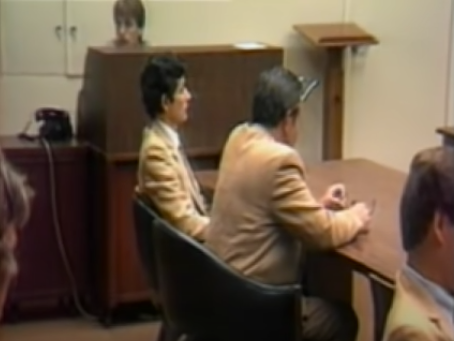
On February 26, Crappa once again met with detectives and prosecutors. Somewhere around that time she reportedly suffered a nervous breakdown and allegedly became suicidal, leading to her being involuntarily institutionalized. That, needless to say, must have greatly facilitated the process of programming the witness. A defense psychiatrist by the name of Albert J. Rosenstein would later describe Crappa in open court as “a Manchurian candidate at a minor level.”
As Alcala’s trial got underway on March 6, 1980, the defendant was paraded into the courtroom in cuffs and leg shackles in a deliberate attempt to prejudice the jury. But the real “linchpin of the trial,” as Sands wrote, “would be the testimony of one Dana Crappa, twenty-one.” On the stand, Crappa’s demeanor was odd, to say the least. She frequently took long, awkward pauses—when she wasn’t staring blankly into space. According to Orange Coast Magazine, her demeanor was so bizarre that the trial judge considered ending her testimony prematurely. She did though tell the story prosecutors wanted her to tell—a story that bore no resemblance whatsoever to the story she told when first mysteriously contacted by police.
In court, Crappa claimed that she had seen the suspect’s vehicle on June 20. She also said that she had seen a man resembling Alcala guide a young girl who resembled Samsoe into the woods. Although she had found what she allegedly observed disturbing, she acknowledged that she had told no one of the incident. When her curiosity got the best of her, she said, she had returned to the area on June 25 to have a look around. At that me, she had allegedly seen Samsoe’s body, decapitated and with part of her face gone. She had, of course, returned by herself and told no one of her supposed discovery. Crappa further told the jury that she had returned a second me on June 29, again alone. On that visit, she claimed, she had observed that Samsoe’s body had been reduced to a pile of bones. In just four days! Following that extremely unlikely second visit, she again, of course, told no one. We are apparently to believe then that she was brave enough to return to a remote murder scene alone on two occasions, but not brave enough to report her discoveries, even anonymously.
Crappa’s testimony had no credibility whatsoever, and she was not the only seriously dubious witness trotted out by the prosecution. There were also Robert J. Dove and Michael Herrera, a pair of Orange County jail inmates, both of whom testified that Alcala had given them jail- house confessions. A third OC inmate, however, testified that he, Dove and Herrera had fabricated the confessions to gain favor with authorities. What the jury didn’t hear was that all three inmates just happened to be clients of Alcala’s first court-appointed attorney. Of the thousands of inmates in the OC jail, Alcala had supposedly chosen to confess his crime only to three guys who happened to be represented by the guy who was supposed to be defending him.
Despite their best efforts, prosecutors were unable to present any physical evidence at all tying Alcala to the murder of Robin Samsoe; there was no fingerprint evidence, no fiber or hair evidence, no blood evidence, and no DNA evidence. There also don’t appear to have been many witnesses who weren’t delivering brazenly perjured testimony.
After a half-hearted defense that included alibi testimony from Alcala’s girlfriend and two of his sisters, followed by closing arguments and jury instructions, deliberations began on April 29, 1980. Jurors returned the next day with a guilty verdict on the charge of first-degree murder. The date was, of course, April 30 (Walpurgisnacht/Beltane)—because that’s just the way these things always seem to work. The penalty phase of the trial was a perfunctory affair with just two witnesses appearing for the prosecution, both of them parole officers to whom Alcala had previously reported. He was quickly sentenced to death.
At Alcala’s first appeal hearing, inmate Joseph Drake took the stand to repeat his claim that he, Dove and Herrera had fabricated Alcala’s confessions in order to strike an “informer’s bargain” with authorities. He was joined by Dove, who freely admitted on the stand that his previous testimony had been perjured. The inmate testimony had been crucial to the prosecution’s goal of adding the special circumstance of kidnapping, which was necessary for the imposition of the death penalty.
On May 28, 1981, the presiding judge issued an extraordinary ruling stating that there had been no “perjured evidence introduced during the trial, and that even had there been, that was not a substantial consideration on regarding Alcala’s guilt.” (emphasis added)
The special circumstance of kidnapping, therefore, would stand and Alcala was returned to Death Row. On August 23, 1984, however, the California Supreme Court ruled that the lower court had erred in allowing into evidence Alcala’s prior offenses. Rodney Alcala would be getting a new trial after all. The available literature invariably expresses outrage over this reversal, claiming that the allegedly criminal-coddling ‘liberal’ courts let him off on “a technicality,” though that is far removed from the truth.
In April of 1986, Alcala’s second trial for the murder of Robin Samsoe got underway. There was a problem though: Dana Crappa, whose testimony was the only hope the state had of getting a conviction, privately informed the judge that she would not be able to testify because she remembered nothing about the incident. She also told him that she did not remember previously testifying, which isn’t surprising considering that she delivered that testimony in an obviously induced mental state. Signaling that this trial was going to be just as much of a sham as the first trial, the judge ruled that he would allow Crappa’s previous testimony to be read into the record without Crappa being present. That, of course, deprived the jury of the ability to judge Crappa’s demeanor and body language and all the other non-verbal clues that jurors use to gauge someone’s honesty and credibility. It also denied the defense the opportunity to cross-examine the witness and confront her with her wildly varying accounts of the incident.
The remainder of the trial largely followed the pattern of Alcala’s first trial, with a number of women—including Alcala’s mother, two sisters, and a female coworker at the Times—providing testimony for the defense. The jury once again returned with a guilty verdict and he was once again sentenced to death, but only after blasting his attorneys in court for being “unprepared and unwilling” to mount a real defense. Some six years later, on December 31, 1992, the California Supreme Court affirmed Alcala’s second conviction. And that, for the next decade or so, would be the end of the Rodney Alcala saga.
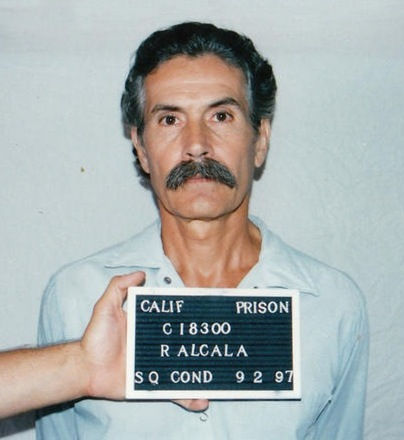
That all changed on March 30, 2001, when a federal district court set aside Alcala’s second conviction based on the wildly improper introduction of Crappa’s prior testimony. The court also opined that the defense had been improperly prohibited from introducing evidence that Crappa’s testimony had been induced. On June 27, 2003, the Ninth Circuit Court of Appeals upheld the decision of the federal court and vacated Alcala’s conviction, additionally citing the failure by police to secure and properly investigate the crime scene.
The stage was now set for Alcala to stand trial for the third time for the murder of Robin Samsoe. The state though was facing quite a dilemma: for whatever reason, there was still a very strong desire to have Alcala take the fall for Samsoe’s disappearance, but there was no semblance of a case left. There would be no perjured inmate testimony. There would be no induced testimony from Dana Crappa. There would be no inflammatory admission of prior uncharged crimes. There would be no parading of Alcala in handcuffs and leg shackles. And there still was not a shred of physical evidence tying Alcala to the crime or the alleged crime scene.
On October 17, 2003, Alcala led a motion to act as his own attorney in the coming trial. This was cast by the media as a misguided, narcissistic attempt by Alcala to put himself in the spotlight. In truth, he was undoubtedly aware that he had been sold out twice before and likely would be again. Indeed, in June 2003, the very month that Alcala’s conviction had been vacated, DNA evidence had supposedly identified him as the killer of Georgia Wixted. The state was going to be taking a novel approach to railroading Alcala this time.
Alcala would soon allegedly be linked by DNA evidence to the Lamb, Parentau and Barcomb murders as well. Like Wixted, they were all killed in Los Angeles County, which is under a different court jurisdiction than Orange County, where Alcala had previously stood trial for Samsoe’s murder. All five cases were handed off to a grand jury, which, as California grand juries do, met secretly to render a decision. According to Sands, “After hearing all the evidence against Alcala, the grand jury came down with an indictment. Although Lamb, Parenteau, Barcomb, and Wixted had all been murdered in Los Angeles County, the grand jury held open the possibility that prosecutors could consolidate all five cases—including that of Robin Samsoe—and try Alcala in Orange County.”
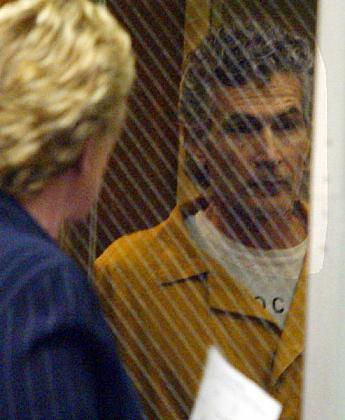
After numerous delays, the consolidated trial began in Orange County in early 2010. It was the first time, and to date the last time, that such a cross-county consolidation had been allowed. The state was now going to try to convict Alcala for the Samsoe murder by presenting it as one of a string of murders, with the other four allegedly being open- and-shut, scientifically unimpeachable cases. It appeared that judicial malfeasance had now reached such a level that the state had dusted of four very old murder cases and manufactured evidence linking Alcala to them as a way of garnering a conviction for a fifth murder that was otherwise not prosecutable.
Alcala was by then being widely identified by police and the media as a prolific serial killer who was likely responsible for other, undiscovered murders. Some of the most over-the-top media coverage came from the UK, where a February 2010 headline in the Telegraph declared that “US serial killer Rodney Alcala could be ‘new Ted Bundy.’” An April 2010 headline in the London Daily Mail was even more histrionic: “The ‘most prolific’ serial killer in US history is sentenced to death as police fear he could be behind 130 murders.”
At Alcala’s third trial, a fingerprint technician testified that a palm print recovered from the scene of Georgia Wixted’s murder thirty-three years earlier was a match for Rodney Alcala. Another technician testified that blood evidence recovered from another of the murder scenes also was a match. Nobody though bothered to explain why Alcala was just then being identified as the perpetrator of these crimes if the evidence linking a known violent sex offender and ‘person of interest’ to the murders had supposedly been in existence for more than thirty years!
Craig Robison, one of the lead detectives on the Samsoe case, testified that he had arrested Alcala on July 24, 1979, and taken him down to the station while other Huntington Beach officers executed a search warrant on the home. It was at that time, according to Robison, that a Sergeant Jenkins had allegedly discovered a receipt for a Seattle storage locker. Rather then seize the receipt, however, he purportedly left it there and copied down the information on it. The actual receipt was never produced at trial and there is no way of verifying that it ever existed.
Following that seriously dubious lead, detectives had discovered a storage unit purportedly filled with photographs and other evidence Alcala had stashed there. Immediately after the discovery of Samsoe’s alleged remains, Alcala is said to have driven to Seattle and deposited the items in the unit, after which he stayed overnight and then drove back home. He had, of course, told no one of this alleged trip and no witnesses could place him in Seattle. And there was no explanation for why he would have driven all the way there, to a city he had no known connection to and was not known to have ever visited, to stash the items. Police would later try to connect Alcala to murders previously attributed to Seattle’s so-called Green River killer.
Alcala was, needless to say, convicted a third time for the murder of Robin Samsoe, as well as for the murders of Lamb, Wixted, Parentau and Barcomb. On March 2, 2010, the penalty phase of the trial began. A week later, on March 9, the jury returned once again with a recommendation that Alcala be executed. Three weeks later, the presiding judge formally sentenced him to die by lethal injection.
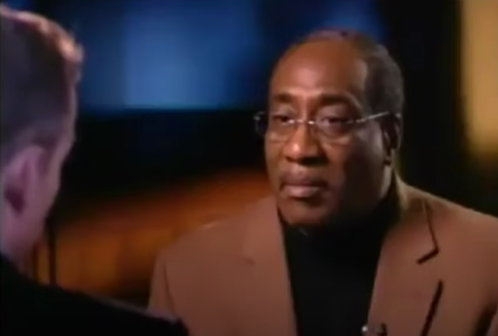
Six months after that third conviction, the television show 48 Hours Mystery aired The Killing Game, a look at the Rodney Alcala case that had been produced by long me correspondent Harold Dow. The episode was aired posthumously; Dow had died suddenly and unexpectedly a month earlier, on August 21, 2010, just before completing work on the project. It is not beyond the realm of possibility that Dow had discovered something about the Alcala case that those with vested interests did not want aired on national television.
Whether or not Alcala’s third convicton in California will stand remains to be seen. Probably as a fallback option in case the convictions are once again overturned, as they certainly should be, Alcala was indicted in 2011 and subsequently convicted in New York for the murders of Crilley and Hover, though it is unclear what evidence those convictions were based on. Over the last several years, authorities have circulated scores of Alcala’s photographs in an attempt to link him to additional crimes. To date, not one of those photos has been linked to any known murders or missing persons cases.
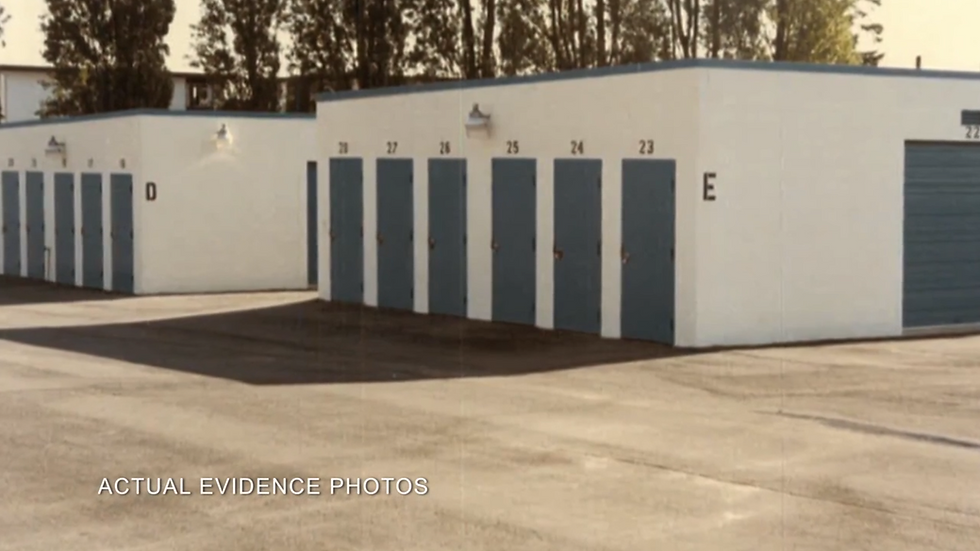




So what, at the end of the day, are we to make of Alcala’s curious connections to the Laurel Canyon ‘peace, love and understanding’ scene? If his official bio is to be believed, his first victim, the daughter of a record executive, was snatched from the mouth of the canyon. One of his last victims was left posed at the northern end. And all along the way, such names as Jim Morrison, Roman Polanski, Marlon Brando and Steve Hodel, and such iconic places as Ciros and the Chateau Marmont, unexpectedly pop up in the storyline.
Rodney Alcala’s story is a strange one even by serial killer standards. But it is far from being the only serial killer story that the mainstream media got wrong. Interested readers can find a wealth of such stories in my previous book, Programmed to Kill.
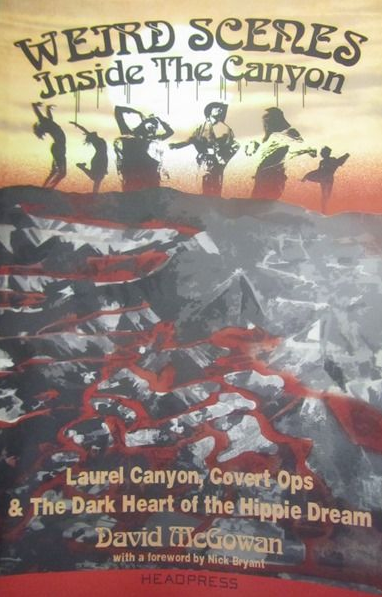

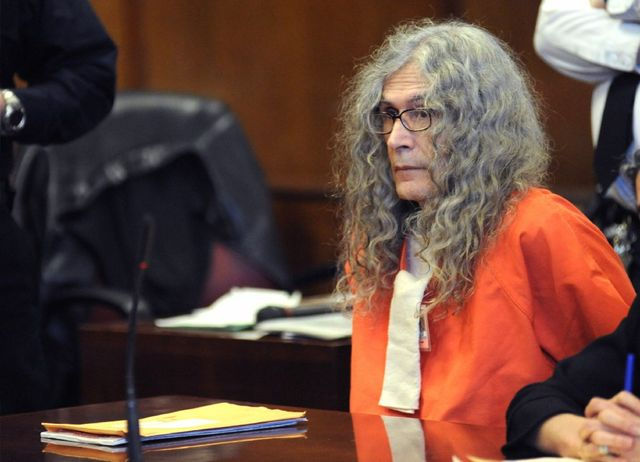
Author Alan R. Warren who wrote the book: The Killing Game actually stated that Rodney Alcala had multiple personality disorder (DID)









You may be familiar with a recent movie that just dropped on Netflix called “Woman of the Hour” with Anna Kendrick. It is the fictionalized version of a true story about a serial killer and rapist name Rodney Alcala. He’s known as the “Dating Game Killer.” There have been countless shows, documentaries, and podcasts about his crimes. He was convicted of murdering 7 girls and women and placed on death row until he died of natural causes in 2021. And while he was convicted of some of his crimes, there was always a belief by investigators that he was potentially responsible for 130 more. One of those unsolved crimes involved Niki Rowe Cross. She says Alcala was one of the johns who raped her in an attic in Akron, Ohio in 1977 where she was held captive as a teenager along with two other teens for a year. Niki tells her powerful and disturbing story as a way to bring awareness to human sex trafficking and to help others.
https://agelesswithamandalamb.libsyn.com/site/niki-cross-human-sex-trafficking-survivor-of-rodney-alcala-speaks-about-the-horror-she-endured
Okay, now get this Rodney Alcala & Richard Cottingham worked with each other!
Alcala found work at an office of the health insurance company Blue Cross Blue Shield Association. Where Cottingham worked as a computer operator.
(Source: https://www.youtube.com/watch?v=g0lZmO5cNo4)
Charges against Rodney Alcala in the murder of Jill Parenteau were initially dropped in 1981 after the DA's key witness perjured himself in another trial which made his testimony inadmissible. DNA evidence would allegedly link Alcala to this crime in 2003.
Santa Cruz Sentinel - Santa Cruz, California 16 Apr 1981, Sun • Page 5
Daily News - New York, New York 02 Sep 1979, Sun • Page 16
The Los Angeles Times - Los Angeles, California 07 Aug 1979, Tue • Page 36
"Two young women who featured in the scrapbook of notorious American serial killer, Rodney Alcala, were Danish but did not become his victims, it has emerged. The two women, who were teenagers at the time, were photographed by the killer outside Copenhagen’s Central Station when he visited Denmark in the 1970s."
"After contacting the two women photographed at Copenhagen Central Station, police have confirmed that neither of them were victims of Alcala."
During this time period Copenhagen had become one the major hubs for the production and distribution of child pornography.
Imprisoned 'Dating Game Killer' Alcala dies in California
You, the jury
by Alcala, Rodney J. (Rodney James),
"It was a picture of the victim of John Wayne Gacy but he was about 3 years old. And who took that picture? Rodney Alcala."
"Crawford conceded that the turnout is often used for drinking and illegal drug activities.
Defendant's offer of proof was that Crawford, a police officer with the Sierra Madre Police Department, would testify that at 11 p.m. on June 22, 1979, two days after Robin's disappearance, he observed Vasquez acting suspiciously in the general area of the crime scene. Vasquez would testify he was in the area in [4 Cal. 4th 792] the late evening of June 22 in order to meet someone. Vasquez was on parole from a previous murder conviction, which the prosecutor characterized as a dissimilar, gang-related incident committed years earlier."
"This case concerns the 1979 death of twelve-year-old Robin Samsoe after her sudden disappearance in the area of Huntington Beach, California. Samsoe left the Huntington Beach apartment of her friend, Bridget Wilvert, just after 3:00 p.m. on June 20, 1979, to attend a ballet lesson. She never arrived at her dance class and none of her family or friends saw her alive again. Police discovered Samsoe's partially decomposed body in a remote mountain ravine about fifty miles away from her home almost two weeks after she disappeared. The state of her remains prevented the coroner from determining the cause of death or whether Samsoe suffered sexual molestation."
Police also found Samsoe's beach towel within a mile of where authorities recovered her remains. A criminalist testified that blood stains on the towel indicated "wipe marks," suggesting that someone had used the towel to wipe clean a bloody instrument such as a straight-edged weapon. Detectives also uncovered a knife caked with mud and covered in debris in the same general location as Samsoe's body; the criminalist found a very small spot of human blood on the knife. The test for human blood consumed the entire sample of blood, precluding more specific blood typing."
"The prosecutor relied on various forms of circumstantial evidence in securing both of Alcala's convictions; no physical evidence directly connected him to Samsoe's death. This circumstantial evidence that Alcala murdered Samsoe included various eyewitness identifications. Two young women, Lorraine Werts and Patty Elmendorf, testified that on the afternoon of June 20, 1979, a man approached them at Sunset Beach, a few miles north of Huntington Beach, and asked if he could photograph them for a class contest. Werts consented. Police later discovered a slide photo of Werts in a Seattle storage locker that Alcala rented a few weeks after Samsoe disappeared. At trial, Elmendorf identified Alcala as the Sunset Beach photographer."
Samsoe and Wilvert also spent June 20, 1979, at the beach. They were at Huntington Beach at approximately 2:00 or 3:00 that afternoon when a man asked if he could take their pictures for a school contest. They agreed, and he took one photo each of Samsoe and Wilvert and one of the two of them together. As the man photographed them, an adult neighbor, Jackelyn Young, mistook Samsoe for her niece and approached the group. The man hurried away as Young got close. Wilvert and Young helped police prepare a composite sketch, which, according to the district court, bore a "moderate resemblance to Alcala." Wilvert never identified Alcala as the man at Huntington Beach. Although Young could not identify Alcala in a photographic lineup just one week after Samsoe's disappearance, she unhesitatingly identified him as the Huntington Beach photographer at trial seven years later. She testified that he was wearing a striped, collarless shirt, and at the first trial she also had stated, in addition to this description, that it was a long-sleeved shirt.
In addition, Richard Sillett, a city surveyor, contacted police after Samsoe's disappearance. He informed them that he, too, had been at Huntington Beach on June 20, 1979. After Alcala was arrested, Sillett identified him as the man he saw taking photographs there that day. Before this identification, Sillett had seen the composite sketch created with the help of Wilvert and Young, as well as pictures of Alcala in the local media and in a police interview. He testified that he was certain that the man had been wearing a blue Hawaiian shirt and had the impression that the man had on cut-off shorts and sandals.
Two other young women, Joanne Murchland and Toni Esparza, testified at trial that they were at Huntington Beach the day before Samsoe's disappearance, when a man sought their permission to take photographs of them for an alleged bikini-of-the-month contest. The man left when the young women declined to give him their phone numbers. Both Murchland and Esparza told police that the composite drawing of the suspect in Samsoe's disappearance depicted the man who took their pictures. Only Murchland selected Alcala's photograph out of a photo lineup. At trial, however, both women positively identified Alcala as the man from the beach. Neither woman could remember what Alcala's car looked like when they testified at the second trial. A police officer who interviewed the women during the investigation testified that Murchland described Alcala's car as "an older red car" and Esparza said it was "an older bigger car," unlike Alcala's one-year-old blue Datsun F-10."
The testimony of Tim Fallen would poke at least one hole in this theory. Fallen testified at Alcala's first trial that he saw Samsoe in Huntington Beach on June 21, 1979 — the day after she disappeared. A police detective showed Fallen a picture of Samsoe on June 21 and asked if he had seen her. Fallen told the detective that he had seen Samsoe just minutes before the detective's arrival. He offered, without prompting, that she was riding a yellow, ten-speed bike. When Samsoe left Wilvert's home the day before, she had borrowed her friend's yellow ten-speed.
Late the next night, on June 22, 1979, police officer Gerald Crawford saw a car parked at a turnout just north of Mile Marker 11 on the Santa Anita Canyon Road, about 100 feet from where authorities ultimately found Samsoe's remains. Crawford then saw Raul Vasquez walking toward the car. Crawford questioned Vasquez about his purpose for being in the area. He responded that he had relieved himself in the woods while waiting for his girlfriend. When Crawford asked Vasquez his girlfriend's name, he either did not know her name or did not respond.
Crawford patted Vasquez down and found a pair of heavy pliers in his back pocket. Crawford questioned Vasquez about the tool, and he responded, "you never know what can happen up here in these mountains." Crawford also searched Vasquez's car, where he found a towel or blanket in the back seat and a six pack of beer on the floorboard of the front seat. Crawford noted that a passenger window was shattered, and broken glass lay strewn across the back seat. Crawford testified that Vasquez seemed upset, extremely nervous, and very shaky; he acted as if he were hiding something.
Comment regarding this photo:
"The picture with the red umbrella is at Disney Land in front of the Haunted Mansion. There used to be a frozen Lemonade stand that I think is the green umbrella to the side."
This article is a more detailed and graphic version of Alice Feiring's ecounter with Rodney Alcala. It presents him more as a depraved sexual predator but this was early on in his alleged attacks.
https://www.pressreader.com/usa/new-york-daily-news/20100425/283648231104326
Alice Feiring was just 13 when she met the captivating cameraman at the St. Marks Bookstore that same year. “We talked about existentialism,” said Feiring, a wine critic.
The conversation led Feiring back to Alcala’s E. Sixth St. apartment, where he snapped pictures — and encouraged the underage girl to shed her shirt.
Feiring wanted to bolt. Alcala, who had locked the door, said no — but she managed to escape.
https://www.alicefeiring.com/blog/alicefeiring_bio.html
Having survived a Long Island upbringing, I ended up a wine writer.
"The Dating Game Killer" by Stella Sands, pg 31
What a bizarre arrangement. Was Borstein's apartment a brothel? Were Cornelia Crilley and her friends also prostitutes? The new apartment they moved into was in a really seedy area as well.
http://cavdef.org/w/index.php?title=Serial_killers#Rodney_Alcala
These are two photos allegedly taken by Rodney Alcala of a young boy that resembles Michael Marino who was reportedly a victim of John Wayne Gacy. There's never been any confirmation of this possible link.
Yvonne Josette Ealy Schwartz Obituary - Ellen Hover's mother
Loring "Ian" Hover - Ellen Hover's brother
https://www.findagrave.com/memorial/76066562/loring-ian-hover
Deceased - 1 May 2001 (aged 45)
Death on California hillside
Loring Ian Hover
Musician, Sony Pictures Entertainment
1982 Married Clark, Nevada
R R Russell
16 Oct 1982, later divorced
Addresses:
1304 N Hayworth Ave #4, West Hollywood, CA
7235 Hollywood Blvd, Los Angeles, CA
Father: H D Hover
SisterEllen Jane Hover1953-1977
GrandfatherIsidore Hover1875-1940
GdmotherCelia PomerantzHover 1880-1963
Nicholas Ryan Hover (Loring's son)
https://www.findagrave.com/memorial/77063072/nicholas-ryan-hover
Deceased - Mar 2001 (aged 17)
GrandfatherHerman D Hover1905-1996
GrandmotherYvonne J Ealy1932-2009
GtgrandfatherIsidore Hover1875-1940
GtgdmotherCelia Pomeranta1880-1963
Loring and his son both die within two months of each other. There's very little information on both of them. If anyone can help.....it would be appreciated.
https://www.bridgeport.edu/faculty/liane-leedom-md
Dr. Leedom is a psychiatrist and an Associate Professor of Counseling and Psychology at the University of Bridgeport. She did her undergraduate work at the University of Southern California (USC), where she obtained a B.S. in Psychobiology. She graduated from the USC Keck School of Medicine where she was active in research, publishing many papers regarding the psychoneuroendocrinolgy of behavior. She trained in psychiatry at Harbor/UCLA Medical Center where she was Chief Resident helping oversee a Psychiatric Emergency Room that served 4 million people. She was a Fellow in Consultation and Out Patient Psychiatry at Yale/New Haven Hospital and studied neuroscience at Yale for five years where she researched sex steroid effects on the brain and behavior. Dr. Leedom currently studies the impact of personality disorders on parenting and the family.
https://people.com/archive/the-eye-of-a-killer-vol-73-no-15/
"After that, he showed a remarkable flair for deceiving people. Alcala fled east and worked as an arts-camp counselor in New Hampshire, even as the FBI was putting him on its Ten Most Wanted list. He also persuaded dozens of women that he was a fashion photographer. “He said he was a professional, so in my mind I was being a model for him,” says Liane Leedom, 48, a Connecticut psychiatrist who was 17 when she let Alcala take pictures of her in her parents’ living room in 1979. Alcala showed her his portfolio, which in addition to shots of women included “spread after spread of [naked] teenage boys. I look back now, and I can’t believe I was so trusting.”"
https://www.nytimes.com/1978/06/15/archives/skeleton-of-east-side-woman-found-in-westchester-disappearance-was.html
The skeleton, that of Ellen Jane Hover, was buried under heavy rocks on a hillside overlooking the Hudson River, about half a mile west of the Phelps Memorial Hospital in North Tarrytown, according to Detective Donald Tasik.
Detective Tasik, who had been working on the case since last August, said the skeleton had been positively identified through dental records and two rings, an ankle bracelet and a barrette found with the body.
When Detective Tasik's investigation led him to a tract of some 600 acres of hard‐to‐naivigate woods in North Tarrytown, including parts of Rockwood State Park, the Schwartzes hired two laborers to dig five days in a section that had been used as a dump.
https://www.nytimes.com/1977/07/30/archives/disappearance-of-young-woman-alarms-her-family-and-friends.html
One thing that the Schwartzes—Miss Hover's mother is remarried to Reuben Schwartz, a lawyer—did was to hire private investigator, ‘Nat Laurendi, retired New York City detective.
Mr. Laurendi, who worked on the Wylie‐Rotten murder cases and helped the government's case against Patricia Hearst, lays that he feels sure “foul play” is involved. From Miss Hover's apartment, he retrieved a Norman Rockwell calendar on which the young woman had inked the name of a man she was to meet on July 15. The name is either John Burger or John Burgh.
Mr. Laurendi said that he had been ordered to leave the unemployment office where he had hoped to find out if the photographer was John BurgerBurgh and whether his address was available. And until now, he says, the police have provided little help in identifying the man who may know where Miss Hover is.
Meanwhile, with a small advertisment with Miss Hover's picture placed in The Daily News, offering a reward for information, Mr. Laurendi is receiving calls from people who say they have spotted her.
A cab driver said he had taken her to the airport; a man said he had seend her in the Bronx, and two callers said’ she had been seen in the Canarsie section of Brooklyn.
One man, who has called twice, said he had kidnapped her, and has instruct ed Mr. Laurendi to deliver $3,000 it ransom.
Mr. Laurendi said he would be at the appointed street at the appointed’ hour, but could not imagine leaving $3;000 on the ground.
New York Daily News - Jun 26, 1971
https://img.newspapers.com/image/?clipping_id=35985107&fcfToken=eyJhbGciOiJIUzI1NiIsInR5cCI6IkpXVCJ9.eyJmcmVlLXZpZXctaWQiOjQ2NDUzODg2NywiaWF0IjoxNTkwNzA2MzY4LCJleHAiOjE1OTA3OTI3Njh9.cQep9hH_QYLYZIp9pEZAii-7lu8qtjdRO5g6UsNI43g
New York Daily News - Jan 16, 1983
https://img.newspapers.com/image/?clipping_id=24133524&fcfToken=eyJhbGciOiJIUzI1NiIsInR5cCI6IkpXVCJ9.eyJmcmVlLXZpZXctaWQiOjM5Njc4NTQxMiwiaWF0IjoxNTkwNzA1MTg1LCJleHAiOjE1OTA3OTE1ODV9.tWKQ4Q22lzmKzDB4XbOtcg01m2iKKO_H5StVthfN0A0
New York Daily News - Feb 12, 1978
https://img.newspapers.com/image/?clipping_id=29879990&fcfToken=eyJhbGciOiJIUzI1NiIsInR5cCI6IkpXVCJ9.eyJmcmVlLXZpZXctaWQiOjQ4MzAwMTE3OCwiaWF0IjoxNTkwNzAzNTAzLCJleHAiOjE1OTA3ODk5MDN9.fFXBSo8IZzZC7HsmYQkuutjCetQXCz0jhLyCk4SBa7s
Another "boyfriend" of Ellen Hover comes forward and says she met Alcala at the unemployment line. What????? She was allegedly broke from supporting an "ex-boyfriend". Then Hover and Cohen spent the weekend in the Hamptons then dropped her off at the train station in Great Neck. You can't make this shit up even if you tried.
Another quote from the LA Weekly article above.
“Jill was a kind of runaway,” says her 49-year-old brother Bruce Barcomb, of North Hollywood. “We were a Catholic family. She was number five and I was number six of 11 kids. Her death put a tremendous hole in my life. My life changed dramatically. She took me to my first freshman dance. She played trumpet in the high school band. She was a candy striper. She was not a throwaway kid.”
This is an interesting quote because Jill Barcomb only "ran away" after she was arrested twice for prostitution in Syracuse, NY. What caused her to turn to this type of life considering her upbringing? No one is perfect but there's something missing to this story.
https://www.laweekly.com/rodney-alcala-the-fine-art-of-killing/
"Ellen Hover “was this little, enchanted cousin of mine,” remembers Sheila Weller,Vanity Fairwriter and author ofDancing at Ciro's: A Family's Love, Loss, and Scandal on the Sunset Strip. “She was naive. She was sheltered. She was very trusting. When you are young and out of college you trust the wrong people. I did so many things like that, and this happened to her the first time out. I felt guilty.”
https://www.marieclaire.com/culture/a4576/rodney-alcala-dating-game-killer/
"I hadn't talked to Ellen in years. That's because when I was 12, my father had cheated on my mother—with Ellen's mom, of all people. When Ellen's dad found out, he came to our house with a gun and threatened to kill my father. The two men survived the fight—barely—but the damage was done. My parents divorced, Ellen's parents divorced, and my father married Ellen's mother.
After that, my father, whom I had unrequitedly worshipped, moved across the country to New York with his beautiful, aloof new wife. My cousin Ellen became my stepsister. She lived with my dad and her mom. I stayed in California with my mother and my sister, Liz. Pained over my father's betrayal, I wrote a furious letter to my father's new wife—and as a result, he disowned me. My little-girl closeness with Ellen faded away; our fairy-tale childhood was crushed.
More than a decade later (after my father had died and Ellen's mother had remarried), my mother called me in New York one day and said, "Ellen is living near you now. She graduated college. She broke up with her college boyfriend, and she has her own apartment. Would you like to call her?"
I snapped back, "No."
I wanted to punish Ellen's mother. But I was really punishing Ellen herself."
Sheila Weller is mentioned in two articles in 2010 which contradict each other. The first quote states that her cousin Ellen Hover was "naive and too trusting" as if she was talking in the present tense but in the second one it's mentioned she hadn't talked to her in over a decade due to a family conflict and refused to when her mother asked if she'd like to reach out to her considering they now lived close to each other. Anita Sobel Feinberg who was friends with Ellen Hover stated that she loved to attend parties and had numerous boyfriends. That doesn't sound like a naive person to me.
https://www.nytimes.com/2011/01/27/nyregion/27unsolved.html
"For more than three decades, the killings of Ms. Crilley and Ms. Hover remained unsolved. It is unclear when detectives in New York became interested in Mr. Alcala — who lived in New York in the early 1970s, attended New York University under an alias and worked as a photographer — as a possible suspect. Law enforcement officials would not say. But a former boyfriend of Ms. Hover’s said in an interview that the police told him two weeks after her 1977 disappearance that a man with California connections might be involved."
"A forensic dentist later issued an opinion that a bite mark on Ms. Crilley’s body was consistent with Mr. Alcala’s impression, a law enforcement official said."
"Mr. Borstein, Ms. Crilley’s boyfriend, said she was “funny and full of life,” with long brown hair and an infectious smile. The details of her murder are still fresh in his memory. He was working as a Brooklyn homicide prosecutor at the time, and he spent most nights with the police interviewing witnesses for his cases.
When Ms. Crilley’s mother called to tell him her daughter was missing, he went with the police to her apartment. “They found her dead body inside,” he said. “They asked if I would identify the body, and I said no. I didn’t want to see her like that.”
He said he did not know why the investigation had stalled for so many years; as Ms. Crilley’s boyfriend, he said, he became a suspect, and his friends in the Police Department did not share information with him."
http://btpclaw.com/leon-baer-borstein/
"Leon Baer Borstein is a talented litigator with an impressive legal background that spans four decades. He has represented both individuals and institutional clients from over 50 countries on various legal matters.
Leon served in the Peace Corps, as a Professor of Economics in Bolivia, for the United States Agency for International Development (USAID). He has also served as Deputy Chief of Investigations, Assistant District Attorney for Kings County, NY and as Chief Special Prosecutor for New York City in Nursing Home Investigations."
Any links to Son of Sam investigation?
https://www.ocregister.com/2010/07/18/did-serial-murderer-alcala-kill-her-too/
Ellen’s father was Herman Hover, who owned Ciro’s, the legendary Hollywood nightclub. Some have suggested that Ellen’s “godfathers” were Dean Martin and Sammy Davis Jr. as she grew up among the rich and famous in Beverly Hills. But her parents divorced when she was young, and her mother, Yvonne, eventually married Ruben Schwartz, a wealthy New York lawyer in the garment industry. He owned a Gramercy Park duplex and a six-acre estate in Westchester County – not far from where his stepdaughter’s body was eventually found.
“She loved to play the piano, spend times with friends and go to parties,” Feinberg recalled. “And she was beautiful and very popular with men. Guys always loved Ellen.”
Bruce Ditnes, one of Hover’s boyfriends, still calls her ‘the love of my life.”
He lived with Hover for a few years until she moved into her Third Avenue walk-up a few months before she disappeared. But they still dated, he said in an interview this month.
“She was extremely intelligent, graceful, demure and refined,” Ditnes said. “She was very pretty … with a voluptuous body. … Even though she tried to dress conservatively, she could stop traffic. … It’s not surprising she stood out and was noticed by Alcala.”
So Ellen Hover's stepdad who was in the fashion industry owned property close to where her remains were found on Rockerfeller Estate which they claim was a favorite photo shoot location for Rodney Alcala? Interesting. Also, more strange comments from another "boyfriend". I can't find much on Bruce Ditnes.....maybe someone can help?
Very true, you know what they say... if it walks like a duck and quacks like a duck... it just might be a spooked out duck.
Peace Corps and USAID are both documented as being long used as fronts by the CIA. Interesting to see them both on his resumé.
http://btpclaw.com/leon-baer-borstein/
"Leon Baer Borstein is a talented litigator with an impressive legal background that spans four decades. He has represented both individuals and institutional clients from over 50 countries on various legal matters."
"Leon served in the Peace Corps, as a Professor of Economics in Bolivia, for the United States Agency for International Development (USAID). He has also served as Deputy Chief of Investigations, Assistant District Attorney for Kings County, NY and as Chief Special Prosecutor for New York City in Nursing Home Investigations."
"Mr. Borstein focuses on commercial litigation, matrimonial law, and alternative dispute resolution. He also serves as Adjunct Professor for FINRA Arbitration and Mediation at the San Francisco Law School. Additionally, he is the co-editor of “A Lawyer’s Guide to International Business Transactions” and the Editor of “A Transactional Guide to the U.C.C.”"
Education
Columbia Law School, LL.B.
Massachusetts Institute of Technology, B.S.
https://www.nytimes.com/2011/01/27/nyregion/27unsolved.html
"But Leon Borstein, who was Ms. Crilley’s boyfriend and said he was with the police when they discovered her body in her apartment, said he did not see the point of prosecuting a serial killer already on death row.
“All it does is entertain him, and it doesn’t do anything for us,” Mr. Borstein said. “He gets to fly out to New York, meet with his lawyers, sit in a courtroom for days on end. It certainly alleviates the boredom of sitting in a jail cell.”"
"Mr. Borstein, Ms. Crilley’s boyfriend, said she was “funny and full of life,” with long brown hair and an infectious smile. The details of her murder are still fresh in his memory. He was working as a Brooklyn homicide prosecutor at the time, and he spent most nights with the police interviewing witnesses for his cases.
When Ms. Crilley’s mother called to tell him her daughter was missing, he went with the police to her apartment. “They found her dead body inside,” he said. “They asked if I would identify the body, and I said no. I didn’t want to see her like that.”"
"He said he did not know why the investigation had stalled for so many years; as Ms. Crilley’s boyfriend, he said, he became a suspect, and his friends in the Police Department did not share information with him."
These are strange comments coming from a man who called Cornelia Crilley "the love his life". He quickly moved on and married another woman less than a year later. It makes you wonder if Leon Borstein was their main suspect all those years before they decided to "close" the case and pin it on Alcala.
https://cdnc.ucr.edu/cgi-bin/cdnc?a=d&d=SBS19810501.1.2&e=-------en--20--1--txt-txIN-rodney+alcala-------1
"Orange County District Attorney Cecil Hicks was called as a witness for the defense Thursday in a hearing to find out whether perjured testimony contributed to the conviction of child murderer Rodney Alcala, now on San Quentin's death row.
Alcala's attorney, Keith Monroe, tried to show, through his questioning of Hicks and Alcala's prosecutor, Richard Farnell, that the district attorney's office received information from a chief witness against Alcala who had recanted his testimony.
https://cdnc.ucr.edu/cgi-bin/cdnc?a=d&d=SBS19810411.1.2&e=-------en--20--1--txt-txIN-rodney+alcala-------1
"A former companion of convicted child killer Rodney James Alcala claimed Friday he "fabricated" a story of Alcala's alleged involvement in the murder of a 12-year-old Huntington Beach girl.
Alcala, now on San Quentin's death row after being sentenced to the gas chamber, was convicted April 30, 1980, of the abduction and murder of Robin Samsoe, whose remains were found in a brushy ravine near Sierra Madre in June 1979.
Granted immunity to testify in an extraordinary hearing ordered by the California Supreme Court, inmate Frank Dove, 24, told Orange County Superior Court Judge Phillip Schwab he lied when he implicated Alcala in the murder."
https://cdnc.ucr.edu/cgi-bin/cdnc?a=d&d=SBS19790727.1.6&e=-------en--20--1--txt-txIN-rodney+alcala-------1
"Investigators from Oxnard in Ventura County, Santa Ana in Orange County and from Los Angeles met here to review similarities between child abduction murder cases in their areas and the murder of Robin Christine Samsoe, said Huntington Beach police Sgt. Luis Ochoa"
"Oxnard investigators were investigating a June 17 sexual attack on a 10 year-old Oxnard girl who has since undergone two brain operations and remains hospitalized, said Oxnard police Sgt Bob Elder. She was kidnapped on Fathers Day near her home, taken to a remote area on Pacific Highway, beaten and left for dead, he said.
Santa Ana police, meanwhile, were investigating the April 9 street-corner disappearance of 7-year-old Charles Christopher Francis.
And Los Angeles County sheriff's Deputy Jim DiGiovanna said there were similarities between Miss Samsoe's death and those of 14-year-old Russell Goudy Jr. of Hacienda Heights and 13-year-old Thomas Glenn Lundgren of Reseda. Both boys disappeared earlier this month.'
William Bonin was later attributed and found guilty of the Lundgren murder while Goudy remains unsolved. Francis has never been found.
https://cdnc.ucr.edu/cgi-bin/cdnc?a=d&d=SBS19790726.1.6&e=-------en--20--1--txt-txIN-rodney+alcala-------1
"Huntington Beach police, who have arrested a free-lance photographer for Investigation of the murder of a 12-year-old girl, say they are meeting with Los Angeles sheriff's investigators to review similarities between that case and the killings of two boys.
Rodney James Alcala, 35, arrested Tuesday at his parents' home in Monterey Park and booked in connection with the killing of Robin Christine Samsoe, whose badly decomposed body was found in Sierra Madre July 2. Huntington Beach police, Lt. Bruce Young said Alcala, a former Los Angeles newspaper typesetter, was being held in lieu of $250,000 bail and was to be arraigned today. Los Angeles County Sheriffs Deputy Jim DiGiovanna said representatives of his department were reviewing Miss Samsoe's death in comparison with the killings of Thomas Glenn Lundren, 13, of Reseda and Russel Goudy Jr., 14, of Hacienda Heights."
"A coworker would later say, perhaps tellingly, that Alcala seemed like he knew a lot of famous people."
Might that have included Hollywood actor Sam Shamshak, who appears to have been the brother of George Shamshak, and has an IMDB entry (https://www.imdb.com/name/nm0787910/) listing his appearances in shows/movies such as NYPD Blue, Seinfeld, and Ghost Whisperer?
Per one article, George Shamshak indeed had a brother Sam who was an actor (https://www.newspapers.com/clip/51767723/the-tampa-times/): "According to Flynn, Jones had been working as a maintenance man at a playhouse in New England where he met Sam Shamshak, a veteran actor and acting instructor in his 40s. The two men. became friends and about a year ago decided to head west in Jones' Ford van. When they arrived in Los Angeles, they wound up by sheer coincidence at the same apartment house. At first, they shared the same $150-a-month bachelor apartment but after about a month, Flynn said, Jones and Shamshak each found jobs and were able to afford separate apartments in the building. Shamshak later took over as manager of the building. Things seemed to be going well for both, he said, until last fall when Shamshak received word that his brother, George, was coming to Los Angeles."
And in a review on Google Books, Peter Mark Jones claims (https://books.google.com/books?id=DsMjwZgPuOMC&sitesec=reviews) that George put him into the story in place of Sam:
> The informant, George Shamshak, older brother, Sam Shamshak, lived in the same apartment house as me and was known as women beater who regularly beat his live in girl friend, Myrna, disturbing theother residents who threaten to call the LAPD! I know for a fact Sam picked up prositutes. I told the LAPD this info on day one of my arrest and stated, "If George was killing women with someone in LA, it was most likely his violent older brother, Sam Shamshak!" It was obvious to me George was just substituting my name for his brother's. Years later I learn from Sam Shamshak's closet friend in LA that Sam Shamshak was rumored to have killed women in Boston and New York and that is why he left Boston.
> I passed all this information along to the LAPD who NEVER detained Sam Shamshak for questioning!
> Peter Mark Jones
"She was also the goddaughter of Sammy Davis, Jr. For reasons that were never explained, the FBI took a keen interest in Hover’s disappearance, which happened to come at a time when New York City was gripped by intense fear."
colonel Michael Aquino, Sammy Davis, Jr., Anton LaVey
The way that the investigation of Jill Barcomb's murder proceeded was very weird. At first, law enforcement tended to assume that all 13 strangled women in the Los Angeles area were done by the same killer(s). Then George Shamshak, who had escaped from prison in Massachusetts, came forward and confessed to being part of two of the murders with his handyman friend Peter Mark Jones. Based on his confession, police only considered them as suspects in the Jill Barcomb and Kathleen Robinson murders, with one article stating "it means police were wrong in linking the 13 deaths to a single killer or murder team" (https://www.washingtonpost.com/archive/politics/1978/04/01/2-la-arrests-cast-doubt-on-single-strangler-theory/413f9c4a-d8ae-44de-b3be-ba74bac7fcd9/).
Jones was arrested but released due to lack of evidence (https://www.nytimes.com/1978/04/04/archives/hillside-strangler-suspect-is-freed.html). Yet at the same time, LAPD chief Daryl Gates had publicly called Shamshak a highly viable suspect due to knowing unpublicized details of the crimes (http://dailyiowan.lib.uiowa.edu/DI/1978/di1978-04-13.pdf#page=3): "Shamshak last week was termed by Gates a "prime suspect" in the sex slayings because he had information that logically could only be known by a participant or detectives investigating the murders of young girls and women going back to last September."
Even weirder, Shamshak apparently had a tape of Kathleen Robinson's murder, and basically implied he merely drove around a group of 3 people -- presumably Peter Mark Jones was one of them -- who committed the murders (https://www.newspapers.com/clip/51715548/george-shamshak-tapes/):
> A Massachusetts prison escapee says he has a tape recording made during the murder of Kathleen Robinson, one of the 13 Hillside Strangler victims, a newspaper reported Thursday.
> The Los Angeles Herald Examiner reported that George Shamshak told the paper in a phone call from prison Saturday that the tape was made in a van while Miss Robinson, 17, was being strangled last Nov. 16. He wanted to sell the tape to the newspaper.
> Shamshak said he possesses five tapes relating to the murders and that their contents show three persons were involved in the slayings one of them a woman who later became a strangler victim herself, the paper said. Shamshak's attorney, Henry Wynn, denied that his client had any tapes, however.
>
> SHAMSHAK SAID the tapes would clear him of any involvement in the murders. "I have never killed anyone in my life," he is quoted as saying. "I just happened to be a willing dupe a pawn. Somebody held something over my head."
> Shamshak, who was serving a prison term for armed robbery in Massachusetts when he escaped last fall has been questioned by Los Angeles police in at least two of the strangler murders. Police say he had special knowledge in the cases.
> The convict said he offered the tapes to police but "the police didn't want to offer me the deal I wanted. I wanted immunity, but they want to prosecute me now, from what I understand, for two murders."
> The paper said negotiations with Shamshak bogged down when prison officials refused to permit any more calls to Shamshak and the newspaper's editor, James G. Bellows, decided "not to get into checkbook journalism."
p.30-31 of Michael Newton's Encyclopedia of Unsolved Crimes (http://web.archive.org/web/20200520021626/https://img.fireden.net/tg/image/1459/19/1459193525585.pdf) talks about how the Barcomb and Robinson cases went from that point on. Although neither Shamshak nor Jones was charged, the LAPD still, for unclear reasons, removed those two murders from the "list of presumed series victims". Then in 1995, Jones tried to obtain records on the cases, only to be told they were "destroyed in an earthquake". And then 8 years later, as the case against Rodney Alcala for the murder of Robin Samsoe was falling apart, the purported DNA match came in the Barcomb case.
I don't know if Shamshak was right to accuse Jones, but he did appear to have inside information on the murders and a tape recording of one of them, yet he was brushed aside. What interests me, however, is the claim by Shamshak, supposedly supported by the tapes, that 3 people were involved in the killings. Could Rodney Alcala have perhaps been part of that team?
Also, that Washington Post article I cite above notes that Barcomb "came to Hoolywood after a New York conviction for prostitution". Is it just a coincidence that Alcala and Barcomb were both in New York, then both came to Los Angeles to be there at the same time?